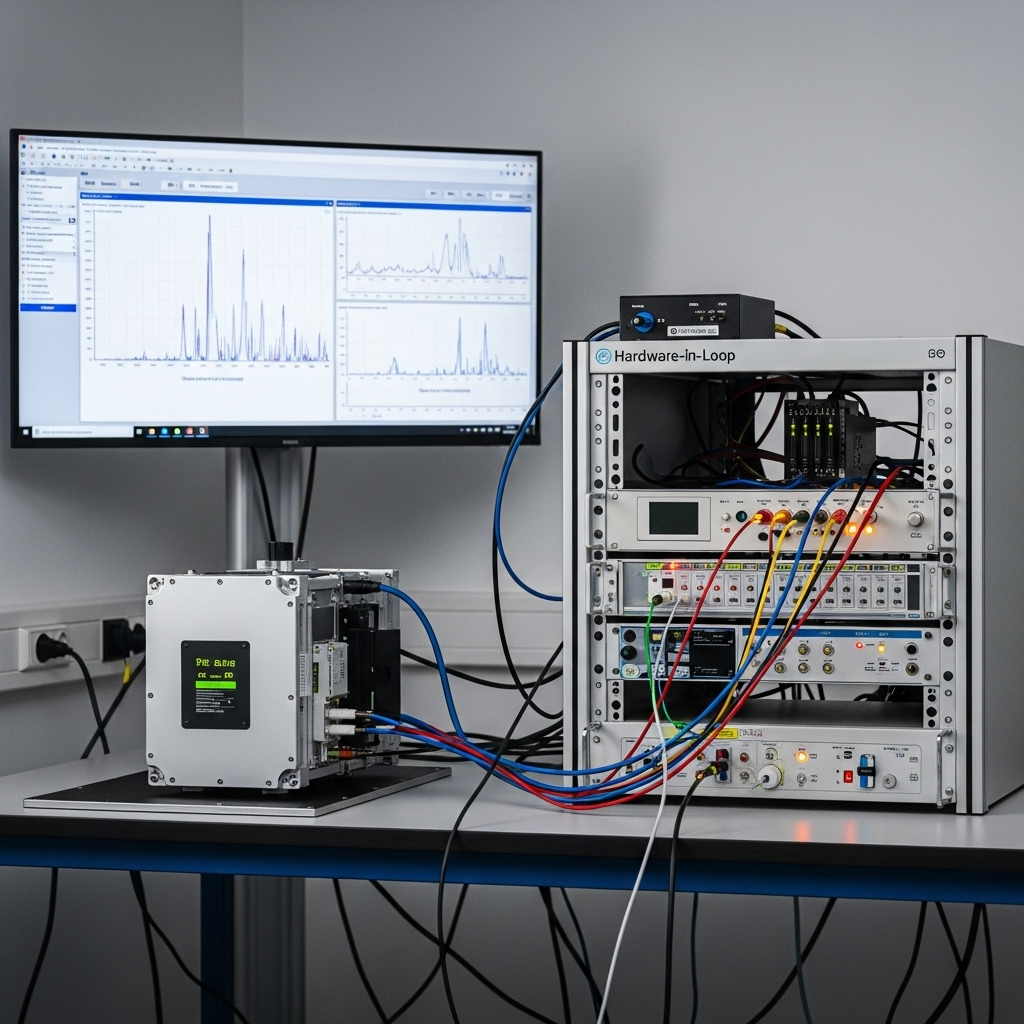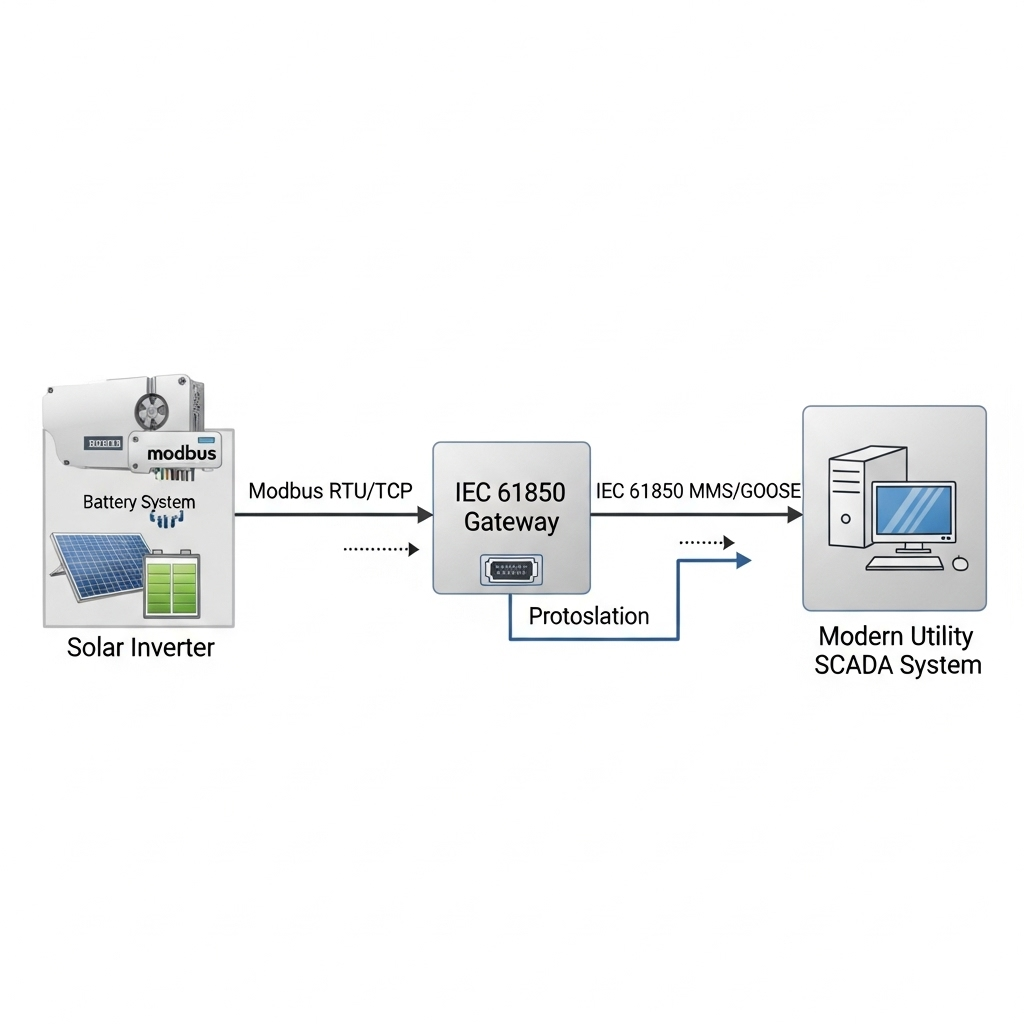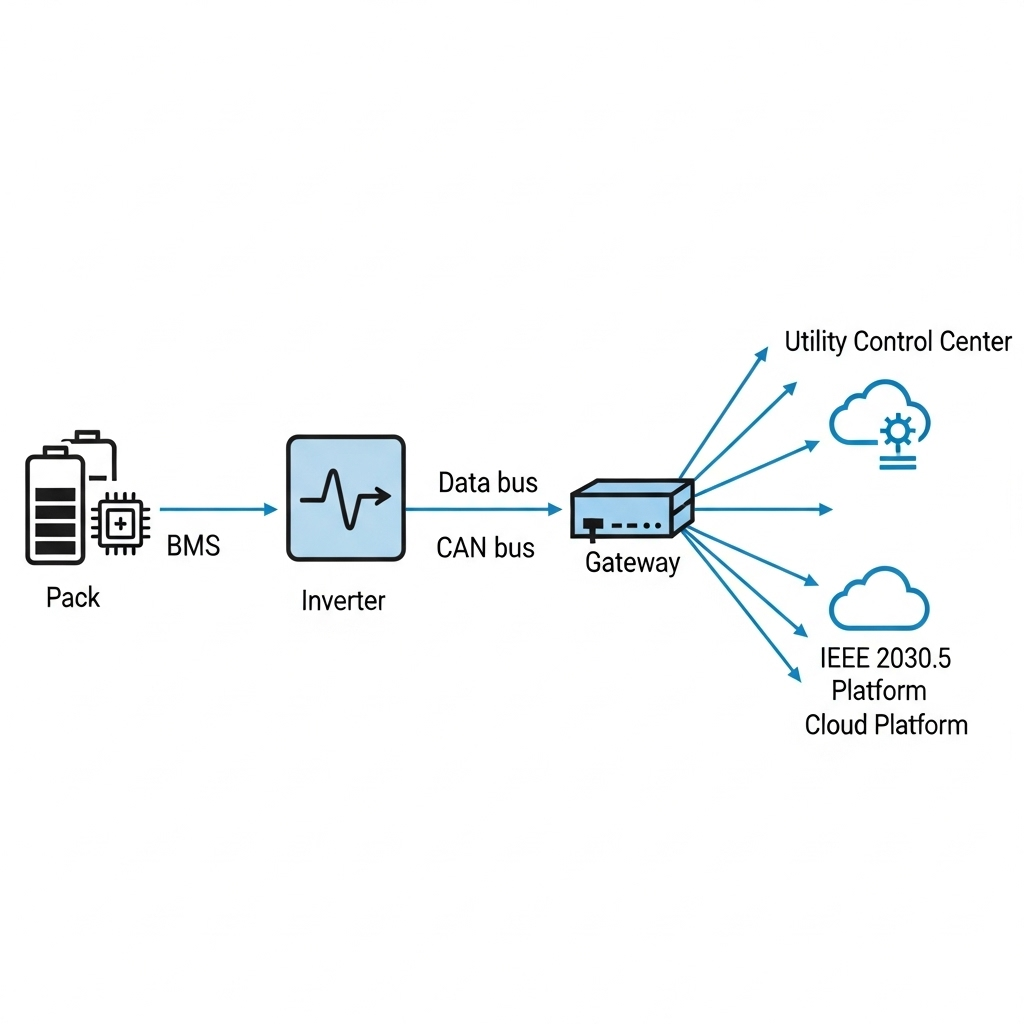In modern energy systems, seamless communication is not just a feature; it is the backbone of reliability and performance. Inverters, batteries, and grid controllers must exchange data flawlessly. But how do you guarantee this communication works perfectly before deploying equipment in the field? The answer lies in rigorous lab testing, specifically using Hardware-in-the-Loop (HIL) simulation to validate protocols like SunSpec, Modbus, and CAN bus.
Why Protocol Testing is Non-Negotiable for DERs
Distributed Energy Resources (DERs), such as solar and battery storage systems, are becoming increasingly complex. This complexity demands a standardized way for components to interact. Without robust testing, you risk deploying systems prone to communication breakdowns, leading to costly failures and reputational damage.
The Challenge of Interoperability
An energy storage system often includes components from multiple manufacturers. A battery management system (BMS) might use CAN bus for high-speed internal updates, while the inverter communicates with a monitoring platform via SunSpec over Modbus. Ensuring these different 'languages' work together is a major integration hurdle. HIL testing allows you to simulate this entire ecosystem in a controlled lab environment, identifying interoperability issues long before they reach a customer site.
The High Cost of Field Failures
Discovering a communication bug during on-site commissioning is a nightmare scenario. It leads to project delays, expensive truck rolls for technicians, and frustrated customers. A simple data mapping error between a battery and an inverter could cause incorrect charging, reduced performance, or even a total system shutdown. Proactive lab testing using HIL simulation directly translates to lower operational costs and higher system uptime.
Meeting Grid Interconnection Standards
Utilities and regulators require DERs to comply with strict grid codes. For instance, the report Grid Codes for Renewable Powered Systems notes that the IEEE 1547-2018 standard mandates that DERs implement at least one of several protocols, including SunSpec Modbus. Failing to meet these requirements can block a product from the market entirely. HIL testing provides the perfect platform to verify that your device's communication stack behaves exactly as the standards demand, ensuring a smoother certification process.
Hardware-in-the-Loop (HIL) Simulation Explained
HIL simulation might sound complex, but the concept is straightforward. It is a testing technique where you connect your real hardware—the 'Device Under Test' (DUT)—to a powerful real-time simulator. This simulator tricks your device into thinking it is operating in a real-world environment.
What is a HIL Test Setup?
For protocol testing, the HIL setup replaces physical components with digital models. Instead of connecting your inverter to a real battery, the HIL simulator pretends to be that battery. It sends and receives communication signals (Modbus, CAN, etc.) just like the real hardware would, allowing you to test your inverter's control logic and communication handling in a safe, repeatable, and automated way.
Key Components of a HIL Lab
A typical HIL lab for protocol validation includes three main parts:
- The HIL Simulator: A specialized computer capable of running complex models in real-time (at microsecond speeds).
- The Device Under Test (DUT): The actual hardware you are testing, such as an inverter controller, a BMS, or an entire energy storage system.
- Interface and Software: The hardware connections (like RS-485 for Modbus or a CAN transceiver) and software tools that allow you to create test scenarios, inject faults, and log all communication data for analysis.
A Practical Review of Protocol Testing Tools
With a HIL system, you can systematically test each communication protocol your device uses. This involves simulating the other end of the conversation and verifying that your DUT responds correctly under all conditions.
Testing Modbus and SunSpec
Modbus is the foundational protocol, while SunSpec provides a standardized data model on top of it for solar and storage devices. To test an inverter's SunSpec implementation, the HIL simulator can be configured to act as a SunSpec-compliant battery or meter. The test involves:
- Loading the relevant SunSpec information models (e.g., battery model 802) onto the simulator.
- Simulating dynamic data by changing register values for state of charge, voltage, and current.
- Verifying that the inverter (DUT) correctly reads these values and writes control commands (like charge/discharge power) to the appropriate registers.
- Using software tools like Modbus scanners to monitor the traffic and flag any deviations from the standard.
Validating CAN Bus Communication
CAN bus is the preferred choice for high-speed, real-time communication within a system, especially between a BMS and an inverter. Its reliability is critical for safety. Using HIL, you can simulate a BMS and bombard the inverter with thousands of CAN messages to test its robustness. Key test scenarios include:
- Simulating critical safety alerts from the BMS, such as over-voltage or high temperature, and confirming the inverter takes immediate protective action.
- Testing the inverter's ability to handle bus errors or message collisions without crashing.
- Verifying that the inverter correctly interprets data like current limits and state of charge to optimize battery performance.
| Protocol | Primary Use Case | Key Testing Parameter | Common HIL Simulation |
|---|---|---|---|
| Modbus (RTU/TCP) | SCADA, external monitoring, and control | Register read/write accuracy, response time | Simulate a slave device (meter, battery) with a specific register map |
| SunSpec | Standardized DER monitoring and control | Correct model implementation, data point mapping | Simulate a SunSpec-compliant device with standard models (e.g., inverter, battery) |
| CAN Bus | High-speed internal communication (BMS to Inverter) | Message timing, arbitration, error handling | Simulate a BMS sending critical state-of-charge and safety messages |
Integrating Multiple Protocols for System-Level Validation
The true power of HIL is its ability to test the entire communication architecture at once. A modern ESS controller must simultaneously manage CAN bus data from the BMS, respond to Modbus commands from a site controller, and perhaps prepare data for a cloud platform. HIL can simulate all these interactions concurrently, uncovering subtle issues like data conflicts, processing delays, and incorrect mapping between protocols. Achieving this level of integration is crucial for maximizing system efficiency. As detailed in the ultimate reference for solar storage performance, the seamless flow of data between the battery and inverter directly impacts round-trip efficiency and overall system lifespan.
The Strategic Advantage of HIL Testing
Adopting HIL testing for communication protocols is more than just a quality assurance step; it is a strategic business decision that provides a competitive edge.
De-risking Product Development
HIL testing allows you to 'shift left,' finding and fixing bugs early in the development cycle when they are cheapest to resolve. This approach aligns with insights from the IEA, whose report on The State of Energy Innovation highlights that open-access test facilities reduce the risks associated with evaluating and certifying new designs. HIL brings this powerful capability directly into your own lab, compressing development timelines.
Accelerating Certification and Compliance
Walking into a formal certification lab with a product that has already passed hundreds of automated HIL tests dramatically increases your chances of first-pass success. You can pre-certify your device against standards like IEEE 1547 in-house, saving significant time and money. This proactive approach to validation demonstrates product maturity and a commitment to quality.
Building a Robust and Future-Proof Product
The real world is unpredictable. HIL allows you to test your device against 'what-if' scenarios—like grid voltage sags, frequency events, or network storms—that are dangerous or impossible to replicate in the field. As noted in the IEA report Transforming Global Markets for Clean Energy Products, testing helps improve decision-making for managing challenges like rapid increases in demand. By stress-testing your communication protocols, you build a more resilient product that is ready for the grid of the future.
Final Thoughts on Lab-Based Validation
In the fast-evolving energy storage market, product reliability is paramount. Rigorous testing of communication protocols like SunSpec, Modbus, and CAN is no longer optional. Hardware-in-the-Loop simulation offers a powerful, efficient, and comprehensive method for validating device communication in a controlled lab environment. By investing in these advanced testing tools and methodologies, you are not just debugging code; you are building trust, ensuring compliance, and delivering a superior product that stands up to the demands of the real world.
Frequently Asked Questions
What is the main difference between testing CAN and Modbus?
Testing CAN bus focuses on real-time performance, timing, and error handling, as it is used for critical, high-speed internal communication like between a BMS and inverter. Testing Modbus, on the other hand, centers on verifying correct data register mapping and command/response logic, as it is typically used for slower supervisory control and monitoring.
Can HIL testing replace field testing completely?
No, HIL testing does not completely replace field testing, but it significantly reduces its scope and risk. HIL is ideal for testing control logic, communication protocols, and fault response in a repeatable way. Field testing remains important for validating performance in the final installation environment, accounting for factors like RF interference and physical wiring that are not present in the lab.
How much does a typical HIL setup for protocol testing cost?
The cost of a HIL setup can vary widely, from a few thousand dollars for a basic PC-based system to over a hundred thousand dollars for a high-performance, multi-unit simulator. The price depends on the required processing power, the number and type of I/O channels, and the sophistication of the software. However, the return on investment from preventing a single major field issue or accelerating time-to-market often justifies the cost.
Is HIL testing only for large manufacturers?
While large manufacturers were early adopters, HIL testing is becoming more accessible to small and medium-sized companies. The availability of more affordable, scalable HIL platforms and open-source testing software has lowered the barrier to entry. For any company developing smart energy devices, HIL provides a significant competitive advantage in quality and reliability.





Leave a comment
All comments are moderated before being published.
This site is protected by hCaptcha and the hCaptcha Privacy Policy and Terms of Service apply.